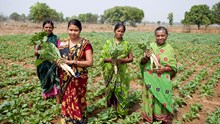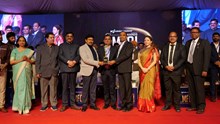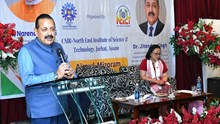
On the edge of Manjara river basin, 35 acres of once barren community grazing land have been transformed into a living Bamboo Museum. What began as an experimental initiative has evolved into a vibrant space where over 20 species of bamboo now grow, each selected for its unique purpose. More than a display of greenery, this plantation serves as a practical guide for farmers, showing how bamboo can transform their land into a source of livelihood and environmental resilience.
This remarkable transformation was made possible by the unwavering support of the local village community, whose leaders generously offered their gaucharan (cow grazing area) for the initiative. Their willingness to collaborate turned an ambitious idea into a living model that educates and inspires.
Vision Rooted in Environmental Care
“Environment is an extension of the physical body. Like we take care of our body, we need to take care of our environment,” says Gurudev Sri Sri Ravi Shankar, the global humanitarian and spiritual leader behind this initiative. Through The Art of Living, Gurudev has spearheaded large-scale plantation drives, planting over 100 million trees across 36 countries. In India alone, 700,000 trees have been planted along river basins to prevent soil erosion and flooding.
Bamboo Museum aligns perfectly with this vision, taking actionable steps to combat climate change. Bamboo, in particular, is a natural climate warrior: it absorbs 30% more carbon emissions and releases more oxygen than many other plant species. Mahadev Gomare, director of environmental projects with The Art of Living’s Vyakti Vikas Kendra India Trust, emphasizes, “Planting bamboos can be instrumental in the fight against climate change.”
Multipurpose Miracle Plant
Bamboo Museum is not just about planting trees, it’s about showcasing the versatility of bamboo. Some species are light and slender, ideal for crafting flutes, while others are dense and strong, capable of replacing timber in furniture and plywood. Certain varieties grow tall and sturdy, perfect for scaffolding and construction, while others can be spun into fabric or even used to build houses.
For farmers visiting the site, this diversity provides a valuable lesson: bamboo is not a single-use plant. It can be adapted to local needs, offering solutions for construction, handicrafts, textiles, and more. The museum acts as a live guidebook, helping farmers decide which species best suits their land and livelihood goals.
Restoring Soil and Biodiversity
The plantation, which began last year, is still in its early stages. For now, cattle are kept out, with villagers collecting grass to use as fodder. But once the bamboo matures over the next two years, it will enrich the soil, attract birds, and create an ecosystem where natural fertility thrives.
This is the magic of planting trees: they do more than provide shade. They restore natural cycles of fertility and biodiversity. Microbes multiply in the soil, organic matter builds up, and fodder returns in abundance. Techniques that farmers buy today as “Jeevamrit” in natural farming naturally occur in such a thriving ecosystem.

Strengthening Community and Strategic Value
Bamboo Museum also carries strategic significance. Many corporate social responsibility (CSR) projects require prepared land for plantation drives, but without groundwork, efforts often stall. By building trust with villagers and keeping land ready, this model ensures incoming support can be immediately utilized. Along the Manjara stretch, nearly 100 acres of land have been developed using this approach.
Unlike conventional monoculture plantations, the museum showcases diversity, proving that multiple species can thrive together. It serves as both a reference for farmers and a live experiment, demonstrating sustainable land management practices.
Bamboo: From Degraded Land to Steady Income
Bamboo has earned its reputation as a miracle plant for good reason. It can replace steel in scaffolding, wood in furniture, and paper in industries, and even serve as a textile crop. On degraded or unproductive land where food crops struggle, bamboo grows with minimal input and provides steady income for farmers.
For the local farmers visiting the museum, the lesson is clear: bamboo is more than a plant; it is a resource that can transform unproductive land into a thriving source of livelihood.

Living Model of Community Effort
As the bamboo matures over the coming years, the museum is set to evolve into a vibrant ecosystem, a model for sustainable livelihoods, and an educational hub for thousands of farmers. Each growing stalk sends a message of resilience, hope, and the power of nature nurtured by community effort. The Bamboo Museum reminds us that solutions to climate change and rural poverty do not always need to come from outside. Sometimes, they grow quietly on the banks of a river, nurtured by the hands of villagers, rooted in community spirit, and reaching for the sky.
















